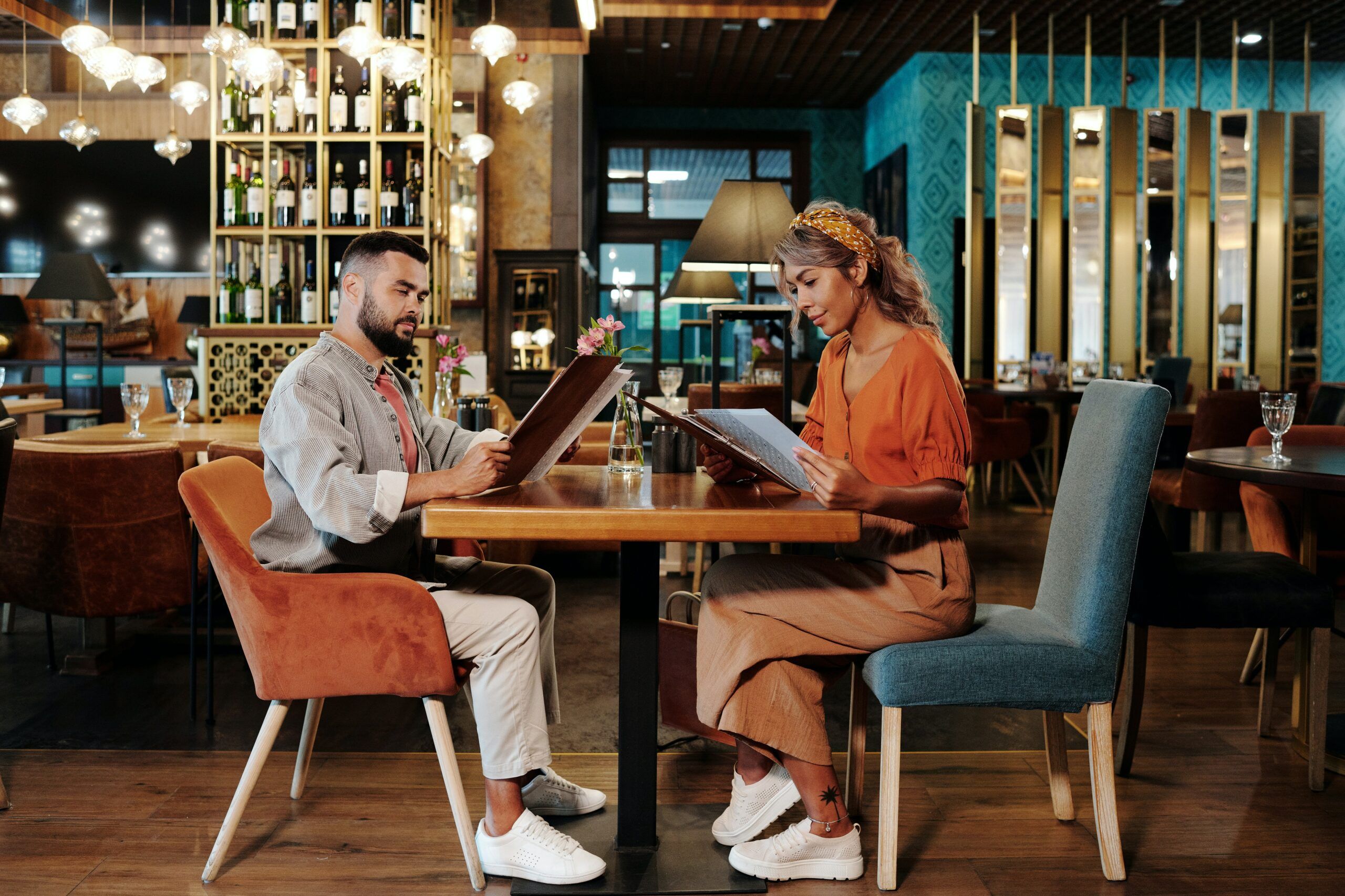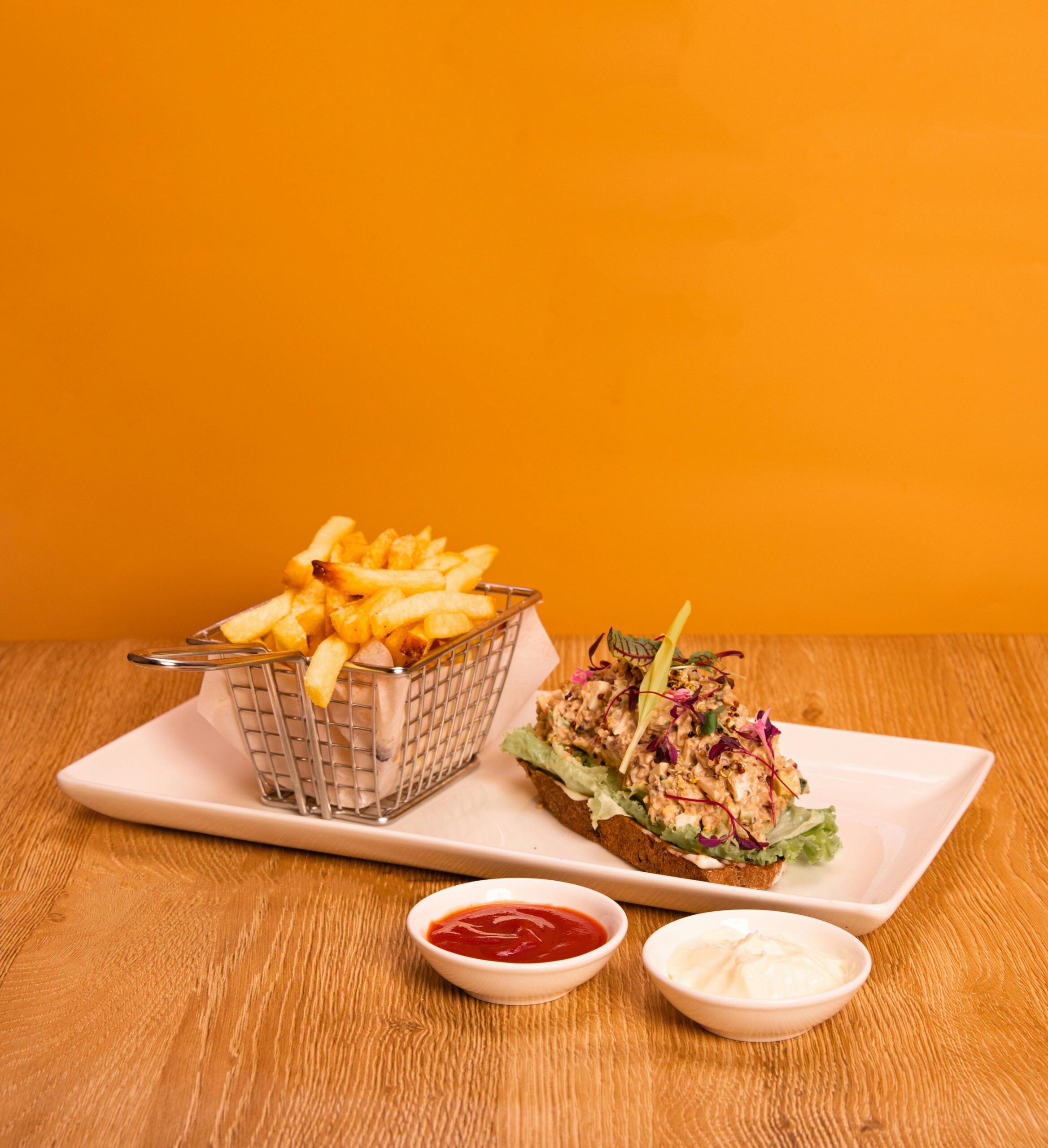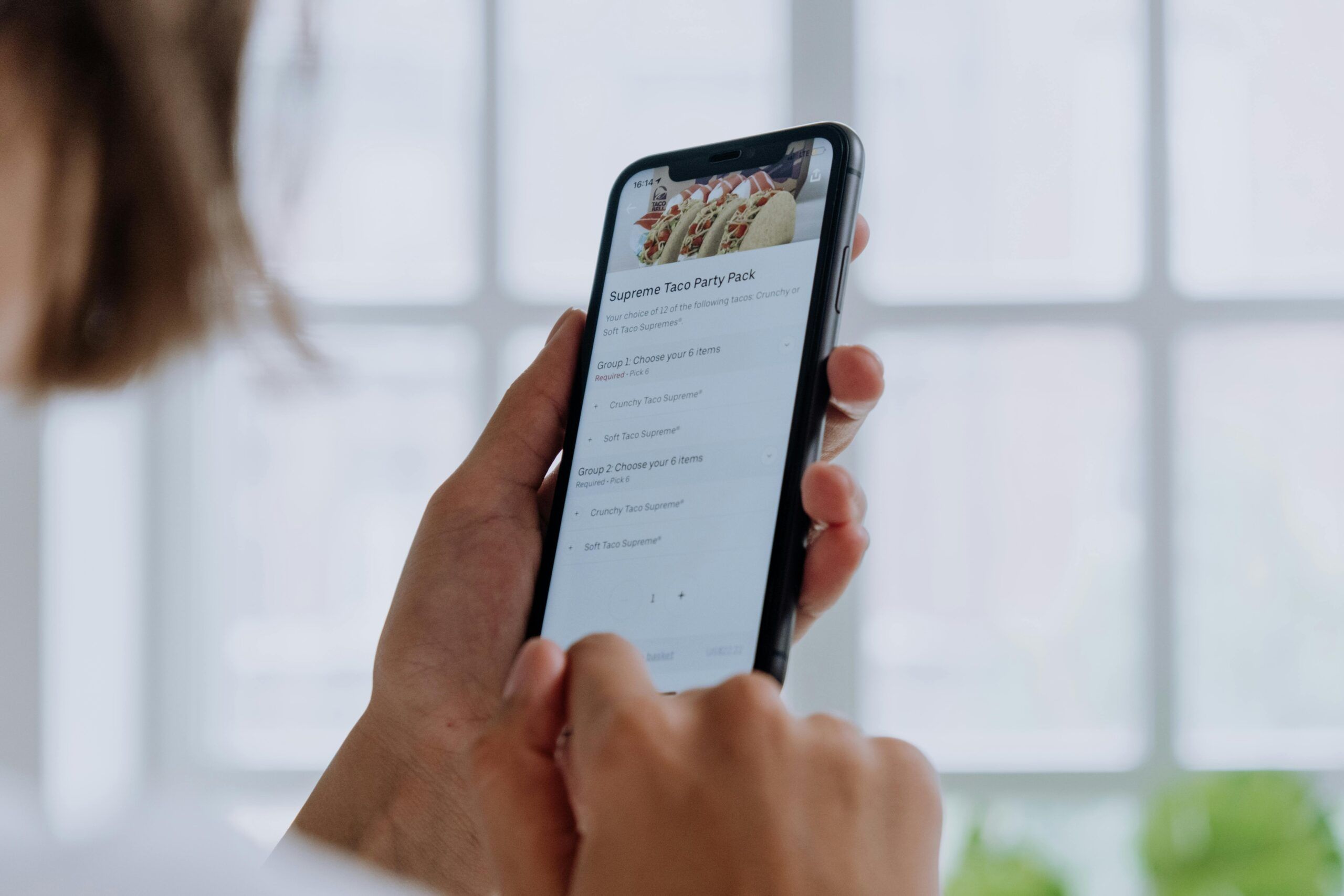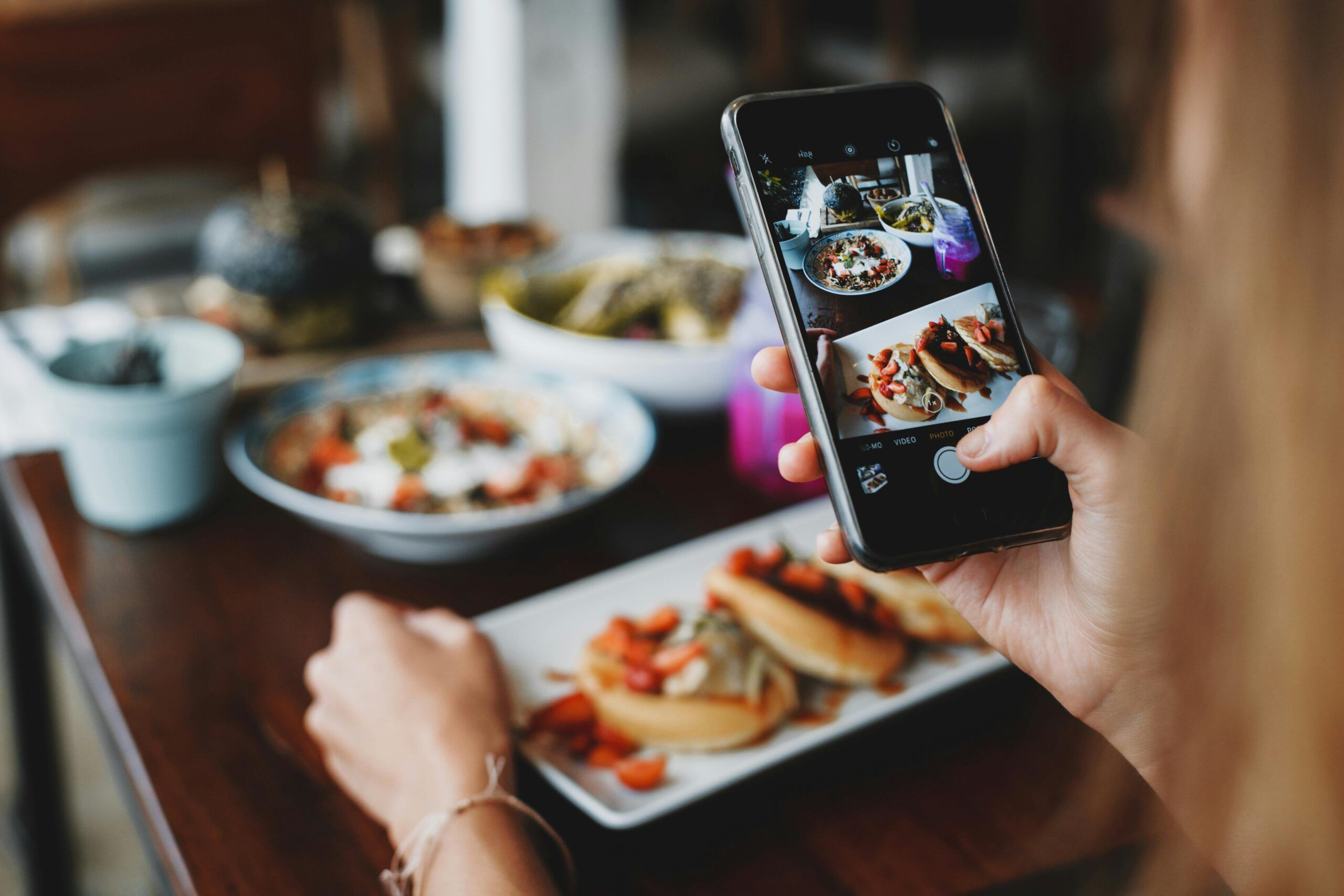- Why Restaurant Menu Design is Important
- Top Factors to Consider When Designing Your Restaurant Menu
- Creating a Digital Menu vs. a Physical One
- Revamp Your Menu and Boost Your Restaurant’s Success
In a world where taste buds dance with anticipation, your restaurant menu holds the power to captivate and entice hungry souls.
For independent restaurant business owners, a thoughtfully crafted menu can be the game-changer that attracts a legion of devoted customers.
In this article, we’ll delve into the art of menu design, exploring the essential elements that will help you create a menu that leaves mouths watering and tables fully booked.
Recognizing the Value of the Golden Triangle
No, we don’t mean the one in Texas! We’re talking about menu design’s golden triangle.
The golden triangle refers to the most valuable real estate on any menu page, as it is the first thing people lay their eyes on when they skim through the page. It should contain items that you know will taste delicious and are not expensive.
So why is it called the triangle?
Think of it like a reverse pyramid, with the point of the triangle pointing downwards. The customer’s eyes will start in the middle of the page, then float to the right, and then to the left – just like a triangle.
Fill this section with your most profitable or popular items. This way, customers will be drawn to items in the center and bottom of the page, which can make all the difference when it comes to getting them to order your most profitable dishes.
Now that we’ve discussed the golden triangle let’s take a look at some more essential elements of menu design.
Why Restaurant Menu Design is Important
First Impressions
A well-designed menu creates a positive first impression and sets the tone for the dining experience. It communicates the restaurant’s brand identity, style, and overall ambiance, influencing customers’ perceptions of the establishment.
Attracts Attention
An eye-catching menu design grabs customers’ attention and draws them in. It entices potential diners to explore the offerings and increases the likelihood of them choosing your restaurant over competitors.
Enhances User Experience
A well-organized and thoughtfully laid-out menu improves the user experience. Customers can easily navigate through the menu, find desired dishes, and make informed choices. Clear categorization, logical flow, and concise descriptions contribute to a seamless and enjoyable dining experience.
Reflects Culinary Expertise
A visually appealing and well-designed menu reflects the culinary expertise and attention to detail of the restaurant. It showcases the creativity, quality, and uniqueness of the dishes, elevating the perceived value of the dining experience.
Drives Sales
Effective menu design can strategically influence customers’ ordering behavior and drive sales. Carefully placed visuals, call-to-action elements, and pricing strategies can encourage customers to choose specific dishes, upgrade their orders, or try new items, thereby increasing the average check size.
Communicates Value
A well-designed menu communicates the value customers can expect from their dining experience. Through visuals, descriptions, and pricing, it conveys the quality, portion sizes, and overall worth of the dishes, helping customers make informed decisions and feel confident in their choices.
Sets Expectations
While going for a classic menu design is always a safe bet, you should also consider your restaurant’s brand and style when designing the menu.
The design elements, such as colors, typography, and visuals, evoke emotions and create expectations about the dining experience. An elegant and sophisticated menu may indicate a fine dining experience, while a playful and vibrant design may suggest a casual or family-friendly atmosphere.
Aligning the menu design with the restaurant’s offerings and ambiance helps manage customers’ expectations and ensure a cohesive experience.
Differentiates the Restaurant
In a saturated market, a well-designed menu can help differentiate your restaurant from the competition. It provides an opportunity to showcase your restaurant’s unique selling points, signature dishes, or culinary specialties, making it memorable and enticing to potential customers.
Builds Brand Loyalty
Consistent design across different platforms, such as in-house restaurant menus, websites, and online delivery platforms, reinforces brand recognition and loyalty. A cohesive and visually appealing menu design creates a sense of familiarity and trust, encouraging repeat visits and customer loyalty.
Adaptability and Evolution
Menu design is not static but can adapt and evolve over time. It allows restaurants to experiment with new dishes, incorporate seasonal offerings, respond to customer feedback, and stay relevant in an ever-changing culinary landscape.
Top Factors to Consider When Designing Your Restaurant Menu
Did you know putting dollar signs on your items can deter people from more expensive dishes?
Avoid doing this as it makes customers feel as though they are being “sold” something. Instead, use words such as “signature” or “house special.”
According to a study, spelling the price in words can also be more appealing to customers, as it is less intimidating.
What other factors should you consider when designing your menu?
Understand Your Target Audience
To effectively attract more customers, it is crucial to first understand your target audience. Identify your niche and analyze their preferences and trends.
Are they health-conscious diners? Adventurous food enthusiasts? Families seeking a comfortable dining experience?
Customizing your menu to cater to their needs will greatly increase its appeal and draw in more customers.
Menu Layout and Organization
The layout and organization of your menu play a significant role in enticing customers. Choose an appealing menu format that aligns with your restaurant’s ambiance and brand identity.
Consider using colors, fonts, and imagery that reflect the atmosphere you wish to create. Categorize your dishes in a logical and intuitive manner, allowing customers to easily navigate and find what they desire. A well-structured menu enhances the overall dining experience and encourages customers to explore your offerings.
Typography and Visual Elements
Typography and visual elements can greatly enhance the visual appeal of your menu. Select fonts that are easy to read and reflect your restaurant’s personality.
Utilize attractive colors and imagery to evoke emotions and create a sense of desire. Incorporate visual hierarchy by strategically placing visual elements to highlight key items or specials. The right combination of typography and visual elements can make your menu visually stunning and alluring.
Descriptive Menu Labels
Compelling and concise dish descriptions are essential to entice customers; instead of merely listing ingredients, craft descriptions that evoke cravings and create a sensory experience. Highlight the unique selling points of each dish, emphasizing flavors, cooking techniques, or special ingredients. Use persuasive language to engage customers and make their mouths water. A well-written menu description can transform a simple dish into an irresistible culinary delight.
Pricing Strategies
Setting competitive and profitable prices is crucial for attracting customers. Research the pricing trends in your area and adjust accordingly. Present prices in an appealing manner, whether it’s using rounded figures or emphasizing value for money. Employ psychological pricing techniques such as anchoring or bundle pricing to influence customers’ perception of value. Striking the right balance between profitability and affordability will make your menu more enticing to customers.
Utilizing Visuals and Photography
Incorporating high-quality food photography is an excellent way to showcase your dishes and entice customers. Invest in professional photography or hire a food stylist to capture visually appealing images of your menu items.
Showcasing vibrant and appetizing food visuals can stimulate customers’ appetites and create a desire to try your offerings. Additionally, consider using illustrations or graphics to add a unique touch to your menu, making it visually engaging and memorable.
Specials, Promotions, and Seasonal Menus
Highlighting daily specials, promotions, and seasonal menus can generate excitement and attract new customers. Regularly feature unique dishes or limited-time offers to create a sense of urgency and exclusivity.
Design seasonal or holiday-themed menus to align with the festivities and cater to customers’ desire for variety. Specials, promotions, and seasonal menus add a sense of dynamism to your menu, encouraging customers to visit repeatedly.
Menu Engineering and Profit Maximization
Menu engineering involves analyzing the performance of your menu items and strategically adjusting prices, portions, and placement to maximize profitability. Monitor sales data and identify the high-profit and popular items on your menu. Highlight these items using visual cues, such as icons or borders, to draw attention and increase their visibility.
Adjust prices or portion sizes of low-profit items to improve their profitability or encourage upselling. Experiment with different placement strategies, such as placing high-profit items strategically on the menu or using decoy items to influence customer choices.
Menu engineering allows you to optimize your menu’s profitability while satisfying customers’ preferences.
Your Inbox, Your Rules!
Tailor your newsletter with the topics you're most interested in.
Feedback and Iteration
Collecting customer feedback on your menu items is vital for continuous improvement. Encourage customers to provide feedback through comment cards, online reviews, or surveys. Analyze the data and identify patterns or trends to understand customer preferences and areas for improvement. Take constructive feedback into account and make necessary adjustments to your menu.
Keep an open mind and be willing to experiment with new dishes or menu changes based on customer feedback. Regularly revisiting and refining your menu ensures that it remains fresh, relevant, and appealing to customers.
Creating a Digital Menu vs. a Physical One
When deciding between a digital menu and a physical menu for your restaurant, there are several factors to consider. Here’s a comparison to help you make an informed decision:
Digital Menu
Advantages
- Flexibility: Digital menus allow for easy updates and changes. You can modify prices, add new items, or remove sold-out dishes in real time without the cost of printing new menus.
- Visual Appeal: Digital menus can incorporate vibrant images, videos, and interactive elements to showcase your dishes more effectively, enticing customers with appetizing visuals.
- Enhanced Information: Digital menus can provide detailed descriptions, ingredient lists, allergen information, and even customer reviews. This comprehensive information helps customers make informed choices.
- Cost Savings: Over time, digital menus can save costs associated with printing and reprinting physical menus, especially if you frequently update your offerings or prices.
- Integration: Digital menus can be integrated with other technologies, such as online ordering systems, loyalty programs, and reservation platforms, streamlining operations and improving customer convenience.
Considerations
- Equipment and Maintenance: Implementing a digital menu requires appropriate hardware, such as tablets or digital signage displays. You’ll also need to ensure proper maintenance, including software updates and technical support.
- Accessibility: Ensure that your digital menu is user-friendly, responsive, and accessible across various devices and platforms to accommodate different customer preferences.
- Connectivity: Reliance on internet connectivity is a potential challenge for digital menus. Make sure there’s a stable internet connection to avoid disruptions in accessing or updating the menu.
Physical Menu
Advantages
- Tangible Experience: Physical menus provide a tactile experience, allowing customers to browse and flip through the pages, creating a sense of connection and familiarity.
- Easy Accessibility: Customers can quickly access physical menus without relying on technology or internet connectivity, making them suitable for outdoor dining areas or areas with limited access to power outlets.
- Branding Opportunities: Physical menus offer branding opportunities through the use of high-quality paper, unique food menu design elements, and custom finishes that align with your restaurant’s ambiance and theme.
- Minimal Maintenance: Physical menus generally require less maintenance than digital menus, as they don’t rely on technology or regular updates.
Considerations
- Flexibility and Updates: Physical menus are static and require reprinting whenever changes or updates are needed, incurring additional costs and time delays.
- Limited Information: Due to space limitations, physical menus may not allow for extensive descriptions, photos, or other interactive elements, which could impact customers’ ability to make informed choices.
- Cost of Reprinting: If you frequently update your menu offerings, seasonal items, or pricing, the cost of reprinting physical menus can add up over time.
- Environmental Impact: Printing physical menus contributes to paper waste, which may conflict with sustainable practices.
Ultimately, the choice between a digital menu and a physical menu depends on your restaurant’s specific needs, budget, brand image, and target audience. Some establishments may even opt for a hybrid approach by offering both digital and physical menu options to cater to different customer preferences.
Just keep in mind that designing an online and physical menu requires different approaches and strategies.
Revamp Your Menu and Boost Your Restaurant’s Success
For restaurant owners, menu design is critical in boosting customer engagement and driving sales.
An effective menu should be visually appealing, intuitively organized, and accurately priced to capture customers’ attention and encourage them to explore your offerings.
Utilize typography, visuals, descriptions, pricing strategies, and other techniques to make your menu more attractive and engaging.
Additionally, invest in menu engineering to optimize profitability while satisfying customer preferences.
Keep a close eye on your customer feedback and regularly revisit and refine your menu as needed. Whether it’s digital or physical, revamping the menu can help you stand out from the competition and drive success for your restaurant.










